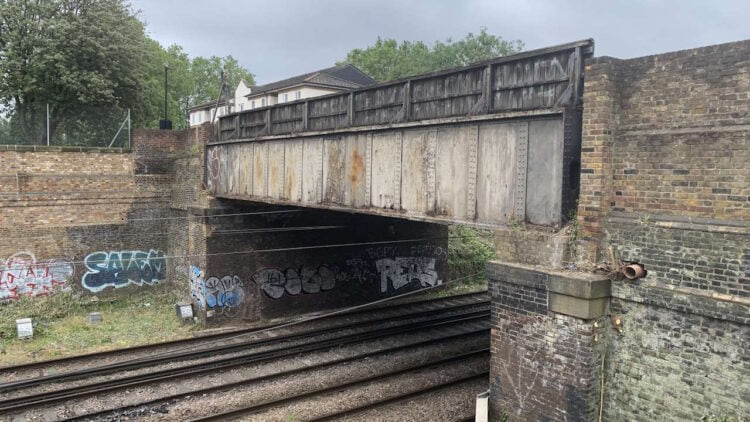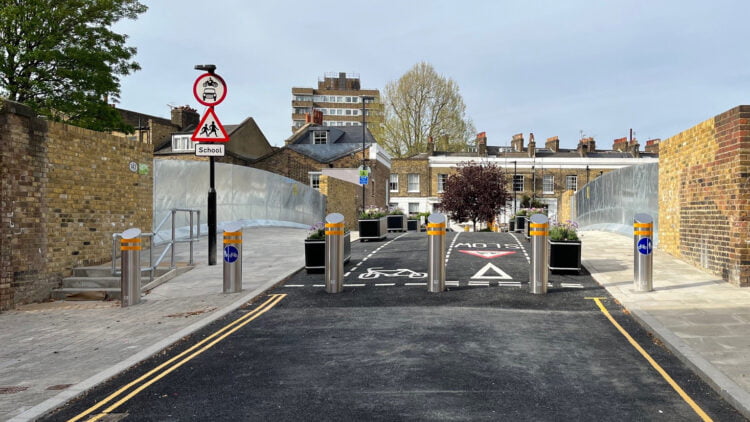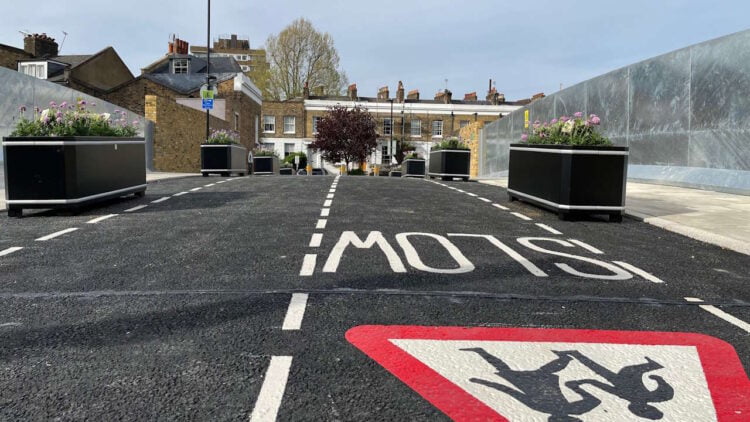A pedestrian and cycle bridge on a vital route at Dalston in East London is now fully open after the previous bridge was demolished and replaced by a new one designed to last 120 years.
The bridge in Kingsbury Road crosses London Overground tracks between Canonbury and Dalston Kingsland / Dalston Junction stations.
It was built in 1916 but had deteriorated so much that in the 1970s it was closed to motorists but remained open to open, pedestrians and cyclists.

In recent years, the iron girders from which the bridge suffered continual extensive corrosion, which resulted in Network Rail deciding to replace it completely.
During the rebuilding, train services were mostly unaffected, although the line was occasionally closed to enable major project milestones to be achieved.
The original Kingsbury Road bridge was demolished during Christmas 2023. A crane lifted the replacement bridge into position over the last weekend of January.

Work to demolish the old bridge and install the new one included:
- Diverting electricity and telecoms connections over a temporary structure.
- Repairing the abutments that support the structure at either end of the bridge.
- Constructing new steel parapets.
- Pouring, curing, and waterproofing the new concrete bridge deck.
- Reinstalling electricity and telecoms connections once the new bridge was in place.
- Reinstating the road and pavement and installing new bollards
The construction work was carried out by Network Rail with its contractor, J Murphy and Sons in partnership with Islington and Hackney Councils.

With the bridge’s reopening, pedestrians and cyclists can again use it to cross the railway. Cycleway 1, which links Tottenham and Waltham Cross with the City, has also returned to its original route along Kingsbury Road, but the bridge will remain closed to motorists.
Kingsbury Road is on a really key route for walkers and cyclists, and it also sits over busy London Overground lines carrying thousands of passengers every day. Our replacement bridge will serve the community by helping to keep everyone moving for decades to come.
I’d like to thank all those who were affected by the disruption we’re grateful to have had your patience and support on this vital project.
Simon Milburn, Network Rail Anglia’s infrastructure director






Responses
The issue isn’t that it is over-engineered, but that such engineering and construction as has taken place is restricted to cycles and pedestrians. The is an example of the increasing nonsense of politicians, both local and national, who have signed up to the idiocy of Climate Change / Zero Carbon. Councils increasingly see themselves as controlling more and more of what we do rather than providing services that are needed.
Clearly, this bridge should be carrying vehicular traffic, over and above cycles and pedestrians. The picture shows there is room for all forms of vehicular and pedestrian traffic to cross it.
What we see here is Councils’ telling us that walking and cycling will be the only way we get about…and they will ensure that we can do only this. Across the country Councils are widening pavements to such an extent that they are now wider than the roadways themselves. Roads are being narrowed in many town to make pavements wider.
It is all part of the restrictive and controlling nonsense coming from Councils. The very large flower boxes are part of the illusion.
I suspect this bridge has been replaced by Network Rail to be capable of carrying all traffic, but that the Council has determined it will only be used by cycles and pedestrians, as part of their ‘Green Agenda’, (they likely call it something else).
It will be empty most of the time…
Seems to be a very over-engineered structure for pedestrians and cycles! Couldn’t it have been made narrower (and cheaper)?